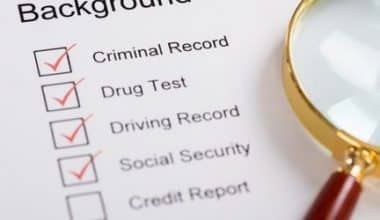To maximize profits, small businesses need an effective inventory management system. A continuous review inventory system frequently uses the economic order quantity standard. It is based on a formula that tells a company how much merchandise it needs to buy to replenish its stock while getting the most value. Learn more about the formula for economic order quantity and its model.
Economic Order Quantity
The phrase is “economic order quantity,” or “EOQ.” This measurement is used in supply, logistics, and operations management. The EOQ method figures out how many and how often orders need to be made to meet a certain level of demand while keeping the cost per order low.
In addition, business owners and managers with a lot of experience know how hard it can be to choose the right purchases and inventory levels. In situations where your vendors offer volume discounts and other inducements to place larger orders, EOQ can help you decide where to draw the line.
Why Is Economic Order Quantity (EOQ) Important?
The economic order quantity is a key part of figuring out how sustainable your business is, since ordering too much could lead to high holding costs and take resources away from other business operations, such as marketing or research and development, that could increase sales or cut costs. Inventory is a type of working capital. Working capital refers to the funds that a company needs to remain operational. However, if you have too much-working capital, it can cut down on your opportunity costs and make your business less profitable.
Also, it’s possible that EOQ isn’t the best way to organize your supply closet. When large, expensive, or important purchases are taken into account, it is especially important. When orders and inventory are rising, EOQ has a greater impact on earnings.
Benefits of Economic Order Quantity (EOQ)
Higher profitability is the main benefit of EOQ. The benefits listed below help your business save money and improve:
- Better Order Fulfillment: A good EOQ also ensures that the product will be available when you need it for a customer order, allowing you to ship it right away and keep the customer happy. Customers should be happier as a result, and sales may increase.
- Less Overordering: By precisely anticipating what you need and when, you can lessen overordering and the accumulation of extra cash in inventory.
- Less Waste: Better order scheduling ought to result in less obsolete stock, particularly for businesses that keep perishable commodities that could eventually go bad.
- Lower Storage Costs: When your ordering is in accordance with your demand, you should have less things to store. Thus, this could lead to lower prices for utilities, real estate, safety, insurance, and related expenses.
- Quantity Discounts: You can take advantage of the best quantity or bulk order discounts that your vendors are prepared to provide by properly planning and timing your orders.
Challenges with Economic Order Quantity (EOQ)
EOQ is typically used by businesses to determine order sizes, but it isn’t always practical. EOQ issues that you can encounter include:
- Poor Data: One of the primary challenges in studying EOQ is finding accurate and reliable data. If a manual or spreadsheet-based systems use inaccurate or outdated data, calculations may be incorrect.
- The potential for savings may be lost due to outdated systems’ possibly incomplete data. An inventory management system or cloud-based ERP can solve this problem.
- Business expansion: Organizations with continuing inventory needs benefit most from using the EOQ method. A business that only uses EOQ risk having inventory shortages due to its quick expansion.
- Inventory Shortages: You’ll probably receive fewer orders the first few times you use this approach. Also, if your predictions are extremely cautious, you run the danger of ordering too little.
- Seasonal requirements: While not insurmountable, seasonality may make EOQ more challenging. This is because there is a chance that the year-round client demand will undergo significant adjustments.
Formula of Economic Order Quantity
By setting the first-order derivative to zero, the Economic Order Quantity formula finds the number of orders that will cost the least overall. The cost of retaining inventory and the cost of ordering that inventory are the two halves of the formula that make up the overall cost per order. The following key notations are necessary to comprehend the EOQ formula:
EOQ Formula components include:
- D: Annual Quantity Demanded
- Q: Volume per Order
- S: Ordering Cost (Fixed Cost)
- C: Unit Cost (Variable Cost)
- H: Holding Cost (Variable Cost)
- i: Carrying Cost (Interest Rate)
Let’s look at the EOQ formula and its key components:
1: Holding Cost
The holding cost is the price associated with keeping something in storage. The price right now. If demand is constant, a calculation must be done to determine where to invest the money or the optimum place to store goods.
H = i*C, Where,
- H= Holding cost
- i= Carrying cost
- C= Unit cost
Since demand stays the same, the number of items in stock will go down as they are used up until there are none left and a new order is placed.
#2 – Ordering Cost
Ordering is the cost that comes with asking a provider for a product. So, to find the annual amount, divide the total number of orders by the average amount of each order.
Received orders = D / Q, Where,
- D = Annual quantity demanded
- Q = Volume per order
- Annual Ordering Cost
A yearly ordering cost is produced by multiplying the total number of orders by the cost of each order.
Annual ordering cost = (D * S) / Q, Where,
- S = Ordering cost
Annual Holding Cost
The annual holding cost is expressed as volume per order + holding expenses added together.
Annual Holding Cost=(Q * H) / 2.
#4: Total Cost
When you add the two fees together, you get the total annual cost of the order. We arrive at the following amount by adding annual ordering and holding costs.
Annual Total Cost or Total Cost = Annual ordering cost + Annual holding cost
(D * S) / Q + (Q * H) / 2 = Annual total cost.
To calculate the EOQ formula, which stands for economic order quantity, divide the total cost by Q.
EOQ = DTC / DQ
Formula for EOQ = √ [2DS/H]
Economic Order Quantity Calculation Example
Kenth owns a company that sells clothes for guys. Kenth must purchase 14,000 pairs of trousers annually to keep up with demand (D). He invests $10 (H) and $100 (S) for the setup and each pair of trousers held. He must be aware of his EOQ.
The EOQ formula was used to calculate these results by entering those numbers:
EOQ = √ (2 x 14,000 x 100/10)
EOQ = √ $2,800,000 / $10
Therefore, EOQ = √280,000
The EOQ = 529 units
When deciding when to place an order, your inventory management procedures frequently use the EOQ. Combining this information enables you to choose the reorder point and the size of the order (EOQ formula). You won’t run out of stock or carry too much dead stock as a result.
How to Improve Inventory Management Using EOQ
You can determine the appropriate order size to boost your company’s profitability when you compute EOQ. There is less need to worry about ordering too much or running out of stock because it eliminates guesswork. The information and figures can be used to decide which option is long-term ideal for your company’s inventory requirements.
In addition, EOQ could have a big influence on your firm, improving operational efficiency, cash flow, and profitability for years to come, if you run a big company, a company that needs expensive inventory, or a company with high inventory holding costs.
Impact of the EOQ statistic
Any business engaged in the purchasing and selling of goods stands to gain a great deal from it. But it’s important to keep in mind the underlying assumptions of the EOQ formula:
#1. Continuous Demand
The EOQ presupposes that year-round demand for your items will be continuous. It doesn’t take into account seasonal variations or changes in demand.
#2. Cost of Placing an Order and Continuous Holding
The EOQ makes the potentially incorrect assumption that holding and ordering costs are constant. Changes in transportation costs, wages, and warehouse rent can also affect your costs and the calculations you need to do to figure out the EOQ.
#3. Unchanged Prices
Vendor discounts are also not taken into account in the EOQ. A vendor’s discount for large orders may make sense for a store to use. Contrary to what the EOQ predicts, buying things in lower quantities in such circumstances can actually save on the retailer’s expenses.
Why Is the Economic Order Quantity Model Formula Necessary?
When it comes to day-to-day operations, managers and retailers frequently struggle to decide how many products to acquire in order to replenish their inventory of a certain item. Order quantity is a crucial factor; if you order too little or too much, it could increase your holding costs or lead to an out-of-stock situation. Both of these things are bad for a business and should be avoided if you want your business to keep running.
These instances of is stocking can be prevented by using the Economic Order Quantity (EOQ) computation. It establishes the ideal quantity to order so that the quantity and price are both fair.
Economic Order Quantity model
The economic order quantity model (EOQ) is an unidentified starting state optimum control problem. Researchers and people who work in operations management and operations research have used the EOQ paradigm for more than a hundred years. The economic order quantity model is used as a part of a system called “continuous review inventory.” In this system, the amount of inventory is always tracked, and an order for a certain amount is placed when it reaches a predetermined reorder point. Also, the EOQ gives a way to figure out the right reorder point and quantity, so that stock can be quickly replaced and there are no shortages. Small business owners that need to decide how much inventory to have on hand, how many things to order each time, and how frequently to reorder to incur the fewest costs may find it to be a useful tool.
In addition, the economic order quantity model assumes that demand stays the same and that inventory is used up at a set rate until it reaches zero. The inventory is then replenished with a specific number of goods to bring it back to zero. There are no inventory shortages or associated expenses because the model assumes fast replacement. In the EOQ model, the cost of inventory is determined by weighing the costs of processing orders against the costs of storing inventory. Small businesses that buy a lot at once will have higher holding costs, while those that buy less often but more often will have lower holding costs but higher order costs. The EOQ model also determines the quantity that reduces the overall cost.
The EOQ model is computed by the following formula:
EOQ= √2Dc
ch
The demand is D per time unit, the holding cost is ch per unit and time unit, and the ordering cost is c.
Why Is There a 2 in the EOQ Formula?
To eliminate the division by “2” in the denominator, the numerator and denominator of the equation are multiplied by two.
What Is Q in the EOQ Formula?
Each time an order is placed, quantity Q is ordered.
What Is the Formula of Total Cost?
As a result, total cost (TC) is the sum of fixed cost (FC) and variable cost (VC), or Kr + Lw = TC = FC + VC.
How Do You Calculate Demand in EOQ?
Demand rate, setup costs, and holding costs are the necessary variables to determine the economic order quantity. EOQ = square root of [2(setup costs)(demand rate)] / holding costs is the formula.
What Is the Formula for Profit? How to Calculate Budget?
Using the equation Total Revenue – Total Expenses = Profit, determining profit is straightforward.
How Do You Calculate Eoq Without Price?
The following is the economic order quantity formula:
- EOQ = [2SD]/H squared.
- S = Setup expenses (per order, generally including shipping and handling)
- D = Demand rate (quantity sold per year)
- H = Holding expenses (per year, per unit)
Conclusion
Economic Order Quantity is a powerful tool that can help a business owner or management team make better decisions, even though it may not take into account everything that affects each business. In other words, it’s a helpful tool since it is dynamic and can be changed as your business expands. You can always change the formula and make a fresh EOQ to reflect the most recent changes to your inventory costs.
You may balance order and inventory expenses, which are easy to miss in day-to-day operations, by calculating the EOQ for your company. The EOQ formula is a useful tool for keeping track of inventory in a smart and efficient way, but it shouldn’t be taken as gospel.
References
- corporatefinanceinstitute.com
- netsuite.com
- wallstreetmojo.com
- quickbooks.intuit.com
- scirp.org






